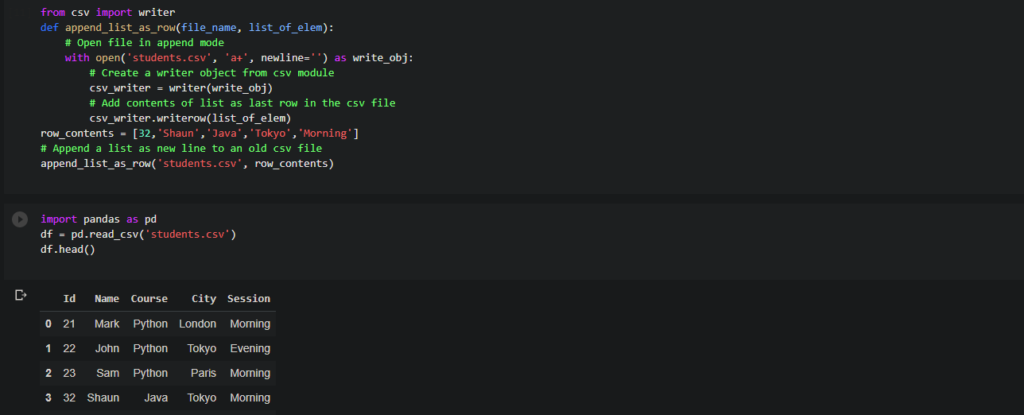
To do this, you need to call the close() method, like this: Readline() vs.
PYTHON OPEN FILR FOR WRITING AND APPENDING FREE
❗️ Important: You need to close a file after the task has been completed to free the resources associated to the file. The value returned is limited to this number of bytes: Nor In this case, the entire file was printed because we did not specify a maximum number of bytes, but we can do this as well. You can use the type() function to confirm that the value returned by f.read() is a string: print(type(f.read())) Here we have an example: f = open("data/names.txt") The first method that you need to learn about is read(), which returns the entire content of the file as a string. Methods to Read a Fileįor us to be able to work file objects, we need to have a way to "interact" with them in our program and that is exactly what methods do. Now let's see how you can access the content of a file through a file object. False otherwise.įor example: f = open("data/names.txt", "a") This is basically telling us that a file object is an object that lets us work and interact with existing files in our Python program. File ObjectsĪccording to the Python Documentation, a file object is: An object exposing a file-oriented API (with methods such as read() or write()) to an underlying resource. I know you might be asking: what type of value is returned by open()? For example: names_file = open("data/names.txt", "r") We are simply assigning the value returned to a variable. Now that you know more about the arguments that the open() function takes, let's see how you can open a file and store it in a variable to use it in your program. For example, if you only need to read the content of a file, it can be dangerous to allow your program to modify it unexpectedly, which could potentially introduce bugs. Think about it - allowing a program to do more than necessary can problematic. It really makes sense for Python to grant only certain permissions based what you are planning to do with the file, right? Why should Python allow your program to do more than necessary? This is basically why modes exist. 💡 Tip: The default modes are read ( "r") and text ( "t"), which means "open for reading text" ( "rt"), so you don't need to specify them in open() if you want to use them because they are assigned by default. For example: "wb" means writing in binary mode. To use text or binary mode, you would need to add these characters to the main mode. That single character basically tells Python what you are planning to do with the file in your program. The second parameter of the open() function is the mode, a string with one character. txt that follow the dot in names.txt is the "extension" of the file, or its type. Notice that we are writing data/ first (the name of the folder followed by a /) and then names.txt (the name of the file with the extension). In this example, this would be the path: open("data/names.txt") Then we need to use a specific path to tell the function that the file is within another folder. This can be used when the file that you are trying to open is in the same directory or folder as the Python script, like this:īut if the file is within a nested folder, like this: The names.txt file is in the "data" folder We usually use a relative path, which indicates where the file is located relative to the location of the script (Python file) that is calling the open() function.įor example, the path in this function call: open("names.txt") # The relative path is "names.txt" The first parameter of the open() function is file, the absolute or relative path to the file that you are trying to work with.

To learn more about them, please read this article in the documentation. There are six additional optional arguments. 💡 Tip: These are the two most commonly used arguments to call this function. One of the most important functions that you will need to use as you work with files in Python is open(), a built-in function that opens a file and allows your program to use it and work with it. ADVERTISEMENT 🔹 Working with Files: Basic Syntax


 0 kommentar(er)
0 kommentar(er)
